Understanding Brisket Smoking
What is Brisket Smoking?
Brisket smoking is a cooking technique that transforms this tough cut of meat into a flavorful, tender masterpiece through a low and slow cooking process. Typically derived from the lower chest of the cow, brisket contains a balance of fat and muscle that requires several hours in the smoker to break down its collagen and achieve that sought-after tenderness. The process involves seasoning the brisket, placing it in a smoker, and allowing it to absorb smoke from wood chips, which imparts a rich, savory flavor.
Why Smoke Brisket?
Smoking brisket is a time-honored tradition in BBQ culture, celebrated for its complexity and the deep flavors it yields. Here are a few reasons why brisket makes a great choice for smoking:
- Flavorful Results: The smoking process infuses the meat with aromatic smoke, elevating its natural flavors.
- Tender Texture: Long cooking times allow the collagen to melt, resulting in a melt-in-your-mouth experience.
- Social Experience: Smoking brisket is often a gathering point for friends and family, turning cooking into a shared celebration.
- Versatile Dish: Brisket can be served in various ways—sliced, chopped, or even as a filling in tacos or sandwiches.
Experiencing brisket smoking can open up a world of culinary delight, making it a captivating dish for any BBQ enthusiast.
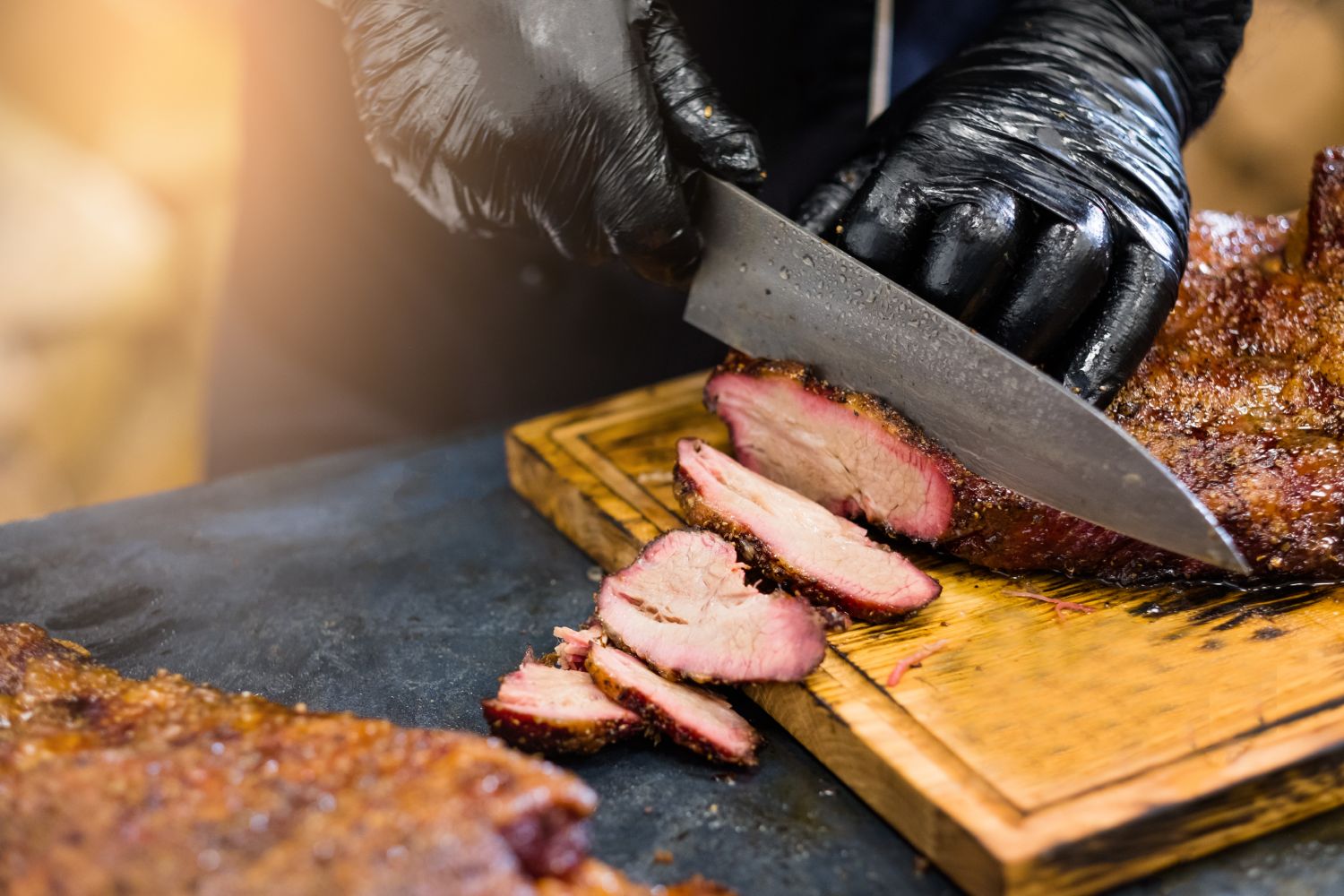
Factors Affecting Smoking Time
Weight of the Brisket
When it comes to smoking brisket, the weight of the meat plays a critical role in determining cooking time. A general guideline is to plan for about 60 to 75 minutes of smoking time per pound. For instance, a 10-pound brisket may take anywhere from 10 to 12 hours, while a 20-pound brisket could require up to 16 hours. This considerable variance means that every brisket is unique and requires close monitoring to ensure perfect doneness.
- Tip: Always consider the size of your brisket before planning your smoking session. Larger cuts may be better suited for gatherings, but remember to adjust your timeline accordingly.
Temperature of the Smoker
The temperature at which you smoke your brisket significantly affects cooking time as well. Setting your smoker between 225°F to 250°F allows the meat to cook evenly and tenderly. Here’s a simple breakdown:
- 225°F to 250°F: Expect around 1 to 1.5 hours per pound.
- Higher Temps (250°F – 275°F): Cooking at higher temperatures can reduce total time, but may alter texture and moisture levels.
Maintaining a consistent smoker temperature is essential. An unstable temperature can extend cooking times or lead to uneven results. Using a reliable meat thermometer can help you monitor the temperature closely and ensure that your brisket reaches the ideal internal target of 195°F to 205°F for tenderness.
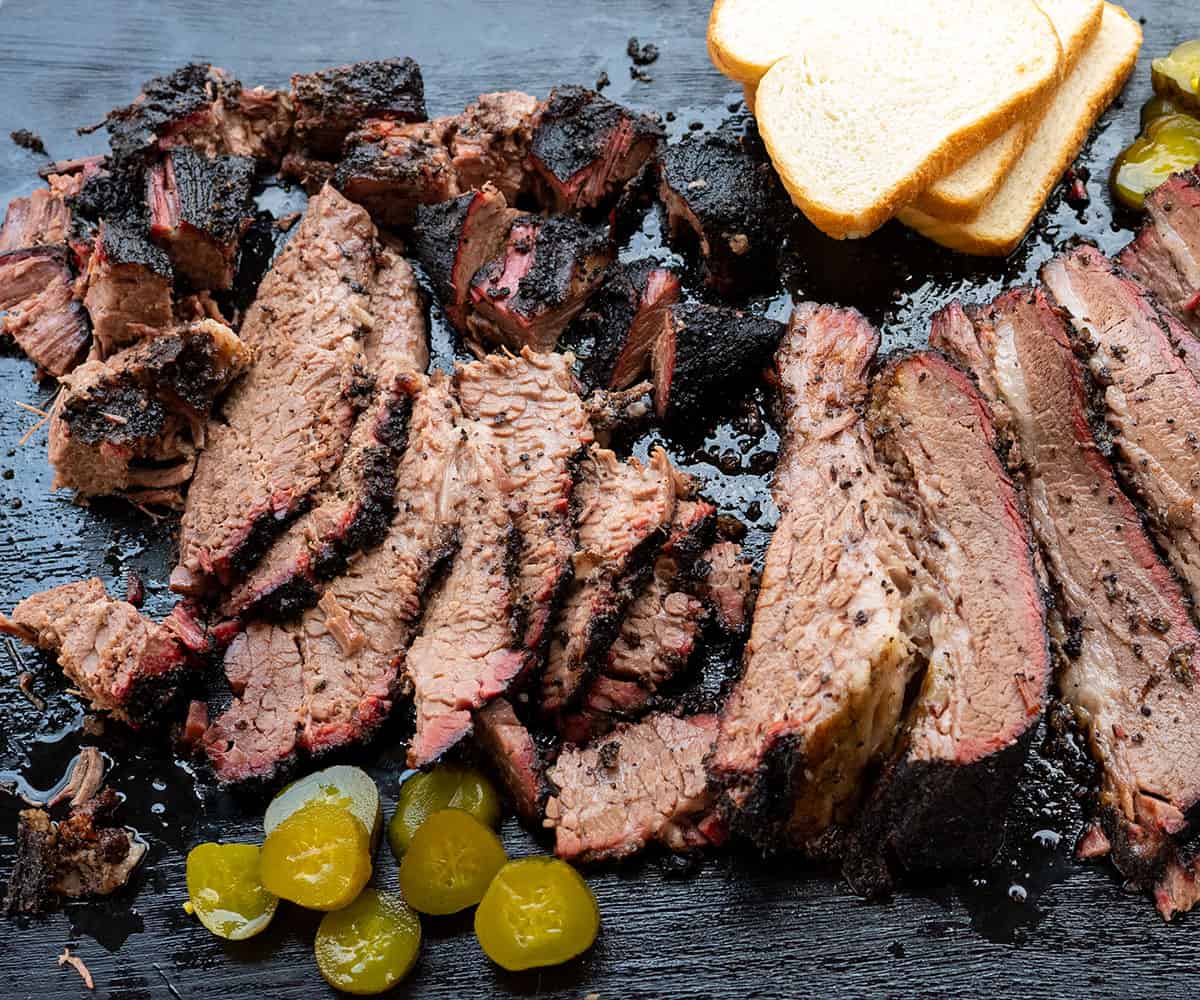
Preparing and Seasoning the Brisket
Trimming the Brisket
Trimming the brisket is an essential first step in the smoking process. It’s all about preparing your meat for a successful cook. Start by ensuring the brisket is cold, as this makes trimming easier. With a sharp knife in hand, follow these steps:
- Fat Cap: Trim the fat cap down to about ¼ inch for optimal rendering. Remove any hard, unyielding fat but leave enough that it adds moisture during cooking.
- Silver Skin: Eliminate any silver skin or gray areas on the underside; these won’t render and can affect texture.
- Shape: Aim for a uniform shape to help the brisket cook more evenly, trimming any excessively thin areas where they could dry out during smoking.
A well-trimmed brisket is not only more aesthetically pleasing but also enhances flavor and texture!
Applying the Rub
Once trimmed, seasoning is the culinary foundation for your brisket. Applying a rub not only adds flavor but also helps form a delicious bark. Here’s how to do it:
- Binder: Start with a thin layer of yellow mustard or Worcestershire sauce. This helps the rub adhere better and enhances the bark without adding noticeable flavor.
- Seasoning: Opt for a mix of kosher salt, pepper, and garlic powder. Apply generously, ensuring even coverage across all surfaces.
Allow the brisket to sit with the rub for at least an hour before smoking. This waiting period allows the rub to bond with the meat, setting you up for a flavor-packed dish.

Smoking Techniques
Choosing the Right Wood
Selecting the right wood for smoking brisket is crucial for imparting that unforgettable flavor. The type of wood not only complements the meat but also influences the overall outcome of your barbecue. Here are some popular options to consider:
- Hickory: Known for its strong flavor, hickory is a classic choice for brisket that delivers a smoky sweetness.
- Oak: This versatile wood provides a medium smoke flavor, making it an excellent all-around choice for brisket.
- Mesquite: Offers a bold taste, ideal for those who enjoy a more robust smokiness. However, be cautious as it can easily overpower the meat if overused.
Trying out a combination of these woods can elevate your brisket to new heights. For instance, mixing hickory with a milder wood like cherry can create a beautifully balanced flavor profile.
Maintaining Consistent Temperature
Consistency in temperature is vital for achieving perfectly smoked brisket. You’ll want to maintain your smoker at 250°F to 275°F for optimal cooking. Here are some tips to help:
- Use a Reliable Thermometer: Keeping an eye on both the smoker and meat temperatures is key. A digital thermometer can be a game changer.
- Avoid Opening the Lid: Every time the smoker lid opens, heat escapes, lengthening cooking time. Resist the urge to peek!
- Adjust Airflow: Regulating the airflow can help stabilize temperature. More airflow means higher heat, while restricting it can reduce temperatures.
Following these techniques helps ensure your brisket is cooked evenly and yields that tender, juicy perfection every BBQ lover seeks.
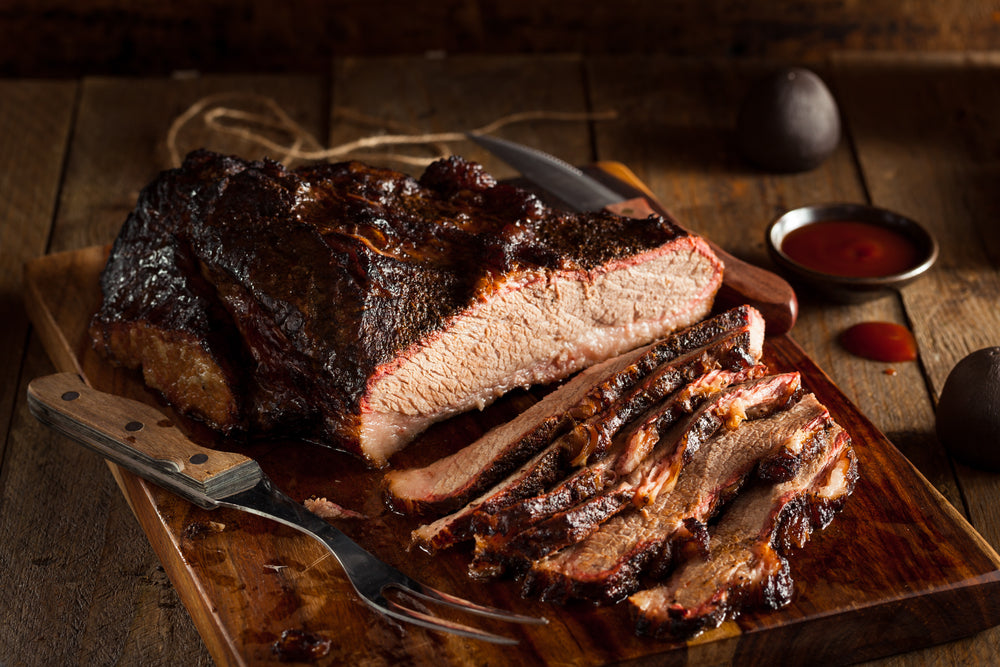
Calculating Smoking Time
General Guidelines for Smoking Time
Calculating the smoking time for brisket can feel daunting, but having a few guidelines can make a world of difference. The general rule of thumb is to plan for about 30 to 60 minutes of cooking time per pound of brisket. For example, a 16-pound brisket cooked at 275°F typically takes around 10 to 12 hours to reach perfect doneness. Keep in mind that the entire process—from trimming to smoking—can extend to 18 to 20 hours.
- Weight Matters: Heavier briskets generally require a longer time in the smoker.
- Consider Thickness: It’s more about thickness than weight; a thicker brisket might take longer compared to a longer but thinner one.
Don’t be discouraged if there’s variability; factors like the smoker type and weather conditions can change timing dramatically.
Using a Meat Thermometer
A reliable meat thermometer is your best friend when smoking brisket. While time estimates provide a helpful framework, they can’t replace the precision of temperature.
- Target Temperature: Aim for an internal temperature of 195°F to 205°F for that tender texture.
- Probe Location: Insert the thermometer into the thickest part of the flat, avoiding the point to ensure accurate readings.
Using a meat thermometer not only ensures doneness but also prevents overcooking, allowing you to enjoy a juicy, flavorful brisket. Invest in a good thermometer, and you’ll find it makes the process far more manageable.
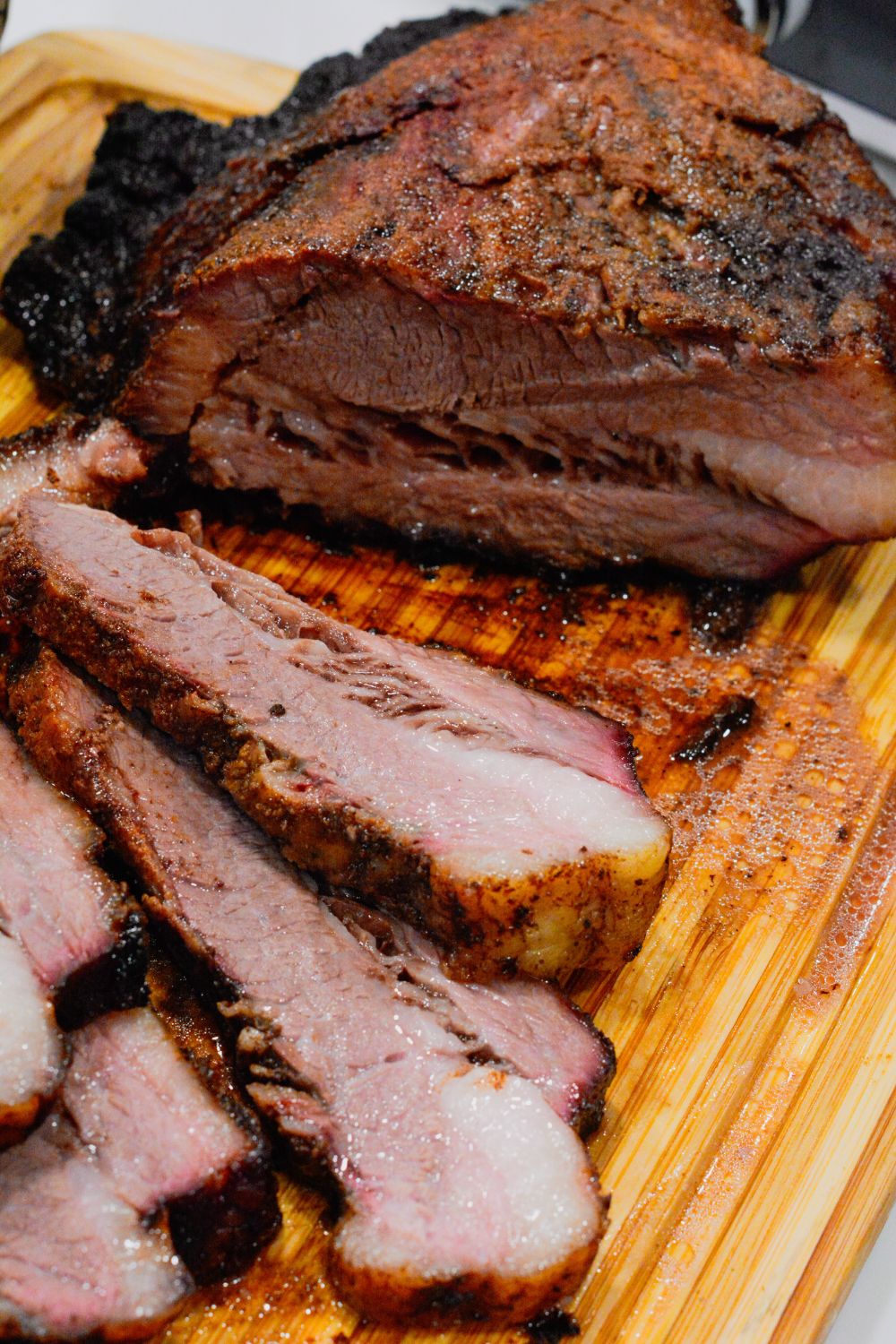
Tips to Enhance Flavor and Texture
Wrapping the Brisket
Wrapping brisket during the smoking process is a game-changer that can elevate both its flavor and texture. As your brisket cooks, it goes through a phase known as “the stall,” where the internal temperature plateaus due to moisture evaporation. Wrapping helps combat this and adds a unique layer of flavor. Here’s how to do it:
- When to Wrap: Most pitmasters recommend wrapping the brisket when it reaches an internal temperature of 165°F to 170°F. However, don’t just rely on temperature; wait until the bark looks dark and feels firm.
- Wrap Options: While foil traps moisture, butcher paper allows the brisket to breathe, preserving the bark’s texture. Personally, I’ve switched to butcher paper as I find it gives a better contrast between bark and tenderness.
This small step can make a significant impact, preventing dried-out meat while enhancing the delicious crust you’ve labored to develop.
Resting the Brisket
Resting your brisket is just as crucial as cooking it. It allows the juices to redistribute throughout the meat, ensuring that every slice remains moist and tender. Here are some steps to consider:
- Cooling Method: After smoking, let the brisket cool at room temperature for about 30-40 minutes, until it hits around 180°F internally. This cooling takes the brisket out of the cooking process.
- Insulated Cooler: Next, transfer it to an insulated cooler for an extended rest of about 1-2 hours, making sure it stays above 140°F. This not only retains heat but also continues to soften the meat.
By following this resting technique, you can truly unlock the full potential of your smoked brisket, yielding an unforgettable dining experience.
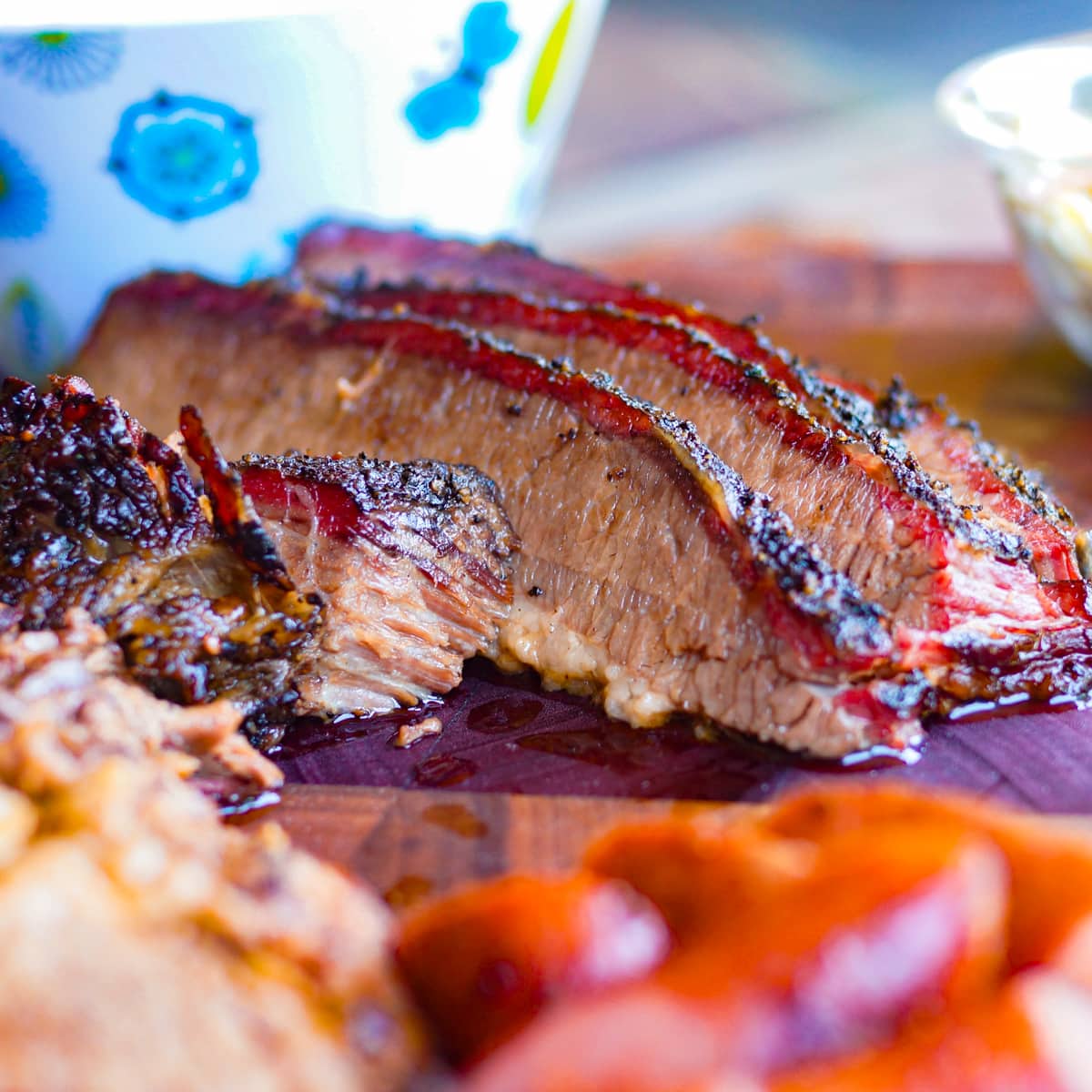
Troubleshooting Common Issues
Stalled Cooking Process
Experiencing a stalled cooking process while smoking brisket is a common issue that can frustrate even the most seasoned pitmaster. This stall occurs when the internal temperature plateaus, often around 150°F to 165°F. This happens due to evaporative cooling as moisture on the surface of the meat evaporates, which cools it down. Here’s how to handle it:
- Patience is Key: Once you notice the stall, resist the urge to crank up the heat. Instead, maintain a consistent smoker temperature (between 250°F and 275°F), and trust the process.
- Wrap it Up: Some cooks choose to wrap the brisket in butcher paper or foil when they reach the stall temperature. This method can help to push through the stall and retain moisture.
I recall a time when I panicked during the stall, only to realize that holding my ground yielded the most tender brisket I’ve ever made.
Oversmoking the Brisket
Another common pitfall is oversmoking the brisket, which can lead to a bitter taste and undesired flavors. Here are tips to avoid this:
- Wood Selection: Avoid using overly sweet woods like cherry or apple, especially in excess. Instead, opt for hardwoods like oak or hickory to impart savory flavors.
- Monitor Smoke Quantity: After the first few hours of smoking, consider cutting down on the amount of wood. Over time, too much smoke can create that unpleasant bitter flavor.
By paying attention to your smoking process and gathering feedback, you can continuously improve and avoid the pitfalls of oversmoking. Trust me, tasting the difference is well worth your efforts!

Serving and Enjoying the Brisket
Slicing the Brisket
Now that your brisket has gone through the meticulous process of smoking and resting, it’s finally time to slice and serve! Proper slicing is vital to ensure maximum tenderness and visual appeal. Here’s how to do it:
- Orientation: Place the brisket on a large cutting board with the grain of the meat facing you. The flat portion should point towards your dominant hand for easier slicing.
- Knife Choice: Use a sharp knife, preferably a meat slicer or carving knife, to ensure clean cuts.
- Technique: Slice against the grain into ¼-inch thick pieces. If you notice the fibers running differently as you reach the point, be sure to rotate the brisket and adjust your slicing direction.
I remember the first time I sliced a brisket—it felt like a celebration! Watching the juices flow as I cut made the effort worthwhile.
Pairing with Sides
Pairing your brisket with the right sides can elevate the meal and provide a balanced dining experience. Here are some classic options:
- Coleslaw: The crunch and tanginess can complement the richness of the brisket.
- Baked Beans: These hearty beans add depth and sweetness that enhance the flavors of the smoked meat.
- Cornbread: A warm, buttery cornbread is a perfect side that pairs well with the savory brisket.
Creating a feast around your brisket not only enhances the flavors but also makes for a memorable gathering with family and friends. Enjoy every bite!

Conclusion and Final Tips
Review of Key Points
As we wrap up this comprehensive guide to smoking brisket, it’s important to reflect on the essential steps that ensure delicious results. Remember to:
- Choose the Right Cut: Opt for a well-marbled full packer brisket for the best flavor and texture.
- Trim Properly: Remove excess fat while retaining enough for moisture during cooking.
- Season Well: Apply a flavorful rub and let it sit, allowing the flavors to penetrate the meat.
- Maintain Consistency: Keep your smoker at temperatures between 250°F and 275°F, and plan on 30-60 minutes per pound for cooking time.
- Rest Your Brisket: Allow it to rest after smoking to ensure juicy slices.
Expert Tips for Smoking Brisket
To truly elevate your brisket game, consider these expert tips:
- Use a Meat Thermometer: Always rely on temperature rather than time to determine doneness.
- Be Patient: Smoke with confidence—great brisket takes time!
- Experiment with Flavors: Don’t be afraid to try different wood types and seasoning blends to find your perfect balance.
By applying these techniques, you’ll be well on your way to impressing friends and family with your BBQ skills!

Leave a Reply